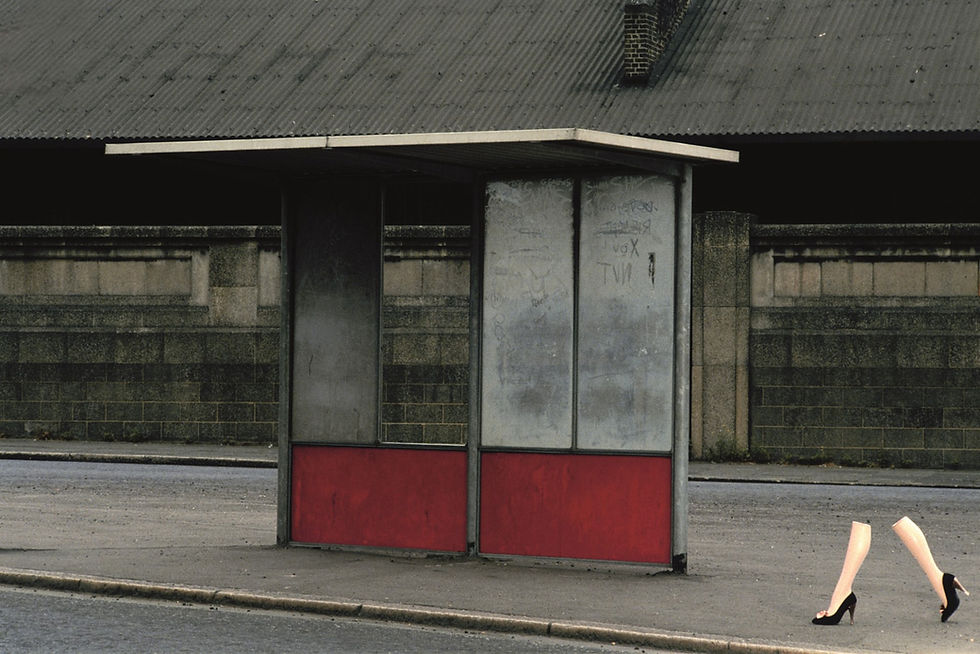Commutation Test
- Dave Macey

- Aug 30, 2018
- 3 min read

In the previous post I discussed the importance of how the values of the paradigm is determined by producing a contrast. It was a case of seeing what the paradigm was not to highlight what the paradigm is defining. There was also the assertion that there are two forms of value, one being inherent and the other being relative.
The commutation test works along a similar line, it is a test to see how much a paradigm can change before the meaning is altered. It can be a further refinement to defining the paradigm, but in a more focused way to find the boundaries of the relative and inherent values of the paradigm. There are four ways as to how this can be altered, which are addition and deletion when it is the syntagma that is changing and substitution or transposition when it is the paradigm that is being altered. So, let’s look at these in turn to fully explore commutation.

Starting with using the commutation test with the tool of addition as part of the syntagm. If we consider this image by Guy Bourdin of a pair of mannequin legs by a bus stop, the syntagm has already been established even by the description I have just given. The syntagmatic axis is mannequin legs, bus stop and so by placing the mannequin legs first a hierarchy is established. This could be further embellished by using a pair of mannequin legs by a bus stop and the addition ofpairhas no bearing on the hierarchy but just clarifies that there are two mannequin legs. By using this addition the paradigm is not altered but helps to refine syntagm and so shows the boundaries and the relative and inherent values of the paradigm are not changed by the addition of the word pair.

Moving onto the next change and that is one of deletion. If we look at the same photograph but with something removed, will it alter the connotation of the image?
In this image the bus stop sign has been removed but, crucially the connotation of the image has not been affected. The shelter is still identifiable as a bus shelter and so the removal of the sign was not an integral part of identifying the structure. This shows that the paradigm was not reliant on the sign for its connotation and so its deletion does not affect its inherent or relative value.
The next item to consider is substitution, and this applies to the paradigm axis.
The next example is from the same series of images and shows the mannequin legs placed next to an ornate wall and a white building that

looks well maintained, very different to the bus shelter from the photograph above. Initially this can seem to be a drastic substitution, changing the background, but crucially it doesn’t alter the message contained within the image, which centres on the desirability of the shoes. This demonstrates that the paradigm of the style of the shoes is unaffected by the background, or at the very most, is complimenting the mannequin legs and not challenging their dominance in the hierarchy.
The last alteration to consider is that of transposition. This will mainly effect the hierarchy of the paradigms because it is altering the relationship between the paradigms and which paradigm will be dominant over the other. At the moment, the image has been defined as “mannequin legs placed next to an ornate wall” and gives the hierarchy of the mannequin legs over the wall. If it was rephrased as “The ornate wall with the mannequin legs” the relationship between the wall and the legs has changed. The wall has gained more prominence than in the previous description and the mannequin legs has decreased in relative value, but the basic connotation of the image remains, which is the desirability of the shoes. This demonstrates that the paradigm of the shoes is so strong within this image that even if the hierarchy is challenged, and so alters the relative value, the inherent value is strong enough to resist altering the connotation.
With these four tools, addition, subtraction, substitution and transposition are handy ways of testing the strength of the paradigms and their dominance within the connotation. It also becomes another way of finding the boundaries of the paradigms and can help to define their own dominance and weaknesses within the current connotation.



Comments